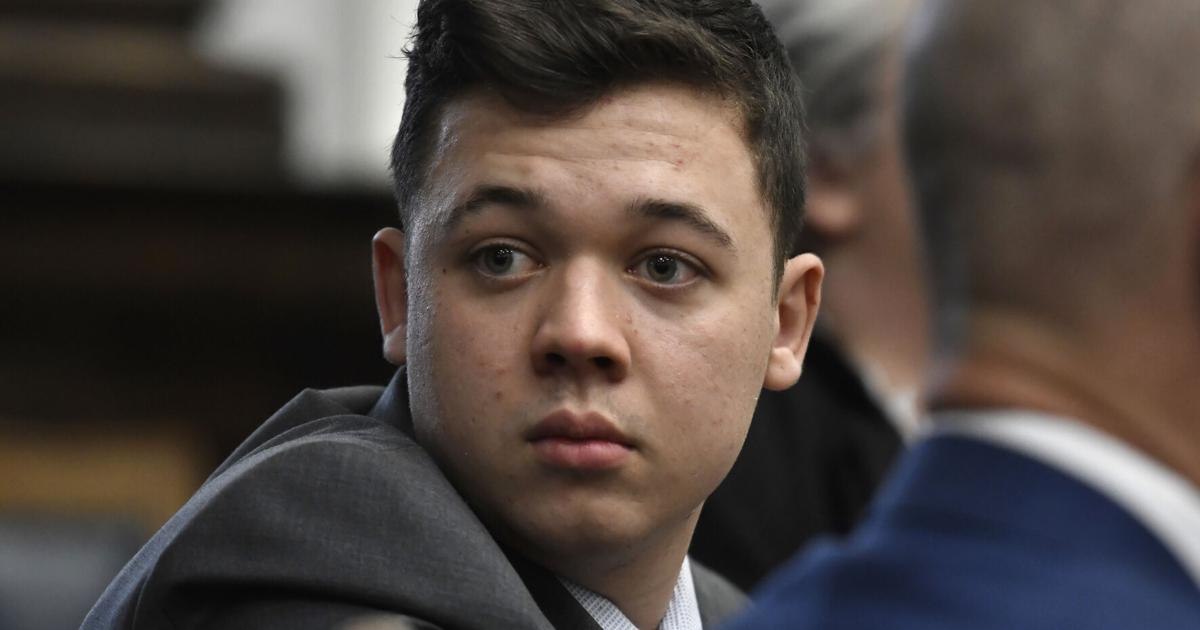Grosskreutz v. Grosskreutz? Survivor from 2020 Kenosha Shooting Sues Kyle Rittenhouse
Grosskreutz effectively repeats his earlier rejected claims that he was merely trying to protect others and had his hands up when Rittenhouse shot him. The difference is that this civil lawsuit will be resolved under the lower standard of proof by a preponderance of the evidence (rather than beyond a reasonable doubt). Nevertheless, the case could prove messy for Grosskreutz whose criminal background and actions that night could undermine his claims. Indeed, the most damaging witness against Grosskreutz may prove to be himself.
The lawsuit names as defendants Rittenhouse, the city of Kenosha, Kenosha County, five other neighboring counties, police officers, former Kenosha County Sheriff David Beth and former Kenosha Police Chief Daniel Miskinis. Grosskreutz alleges assault, battery, and intentional infliction of emotional distress. Rittenhouse was also added to Grosskreutz’s civil rights and Equal Protection claims against the city and local officials.
In the trial, Grosskreutz admitted that he pointed a firearm at Rittenhouse before the then-teenager shot Grosskreutz and two others. He testified that he carried a loaded gun that night and, during cross-examination, defense attorney Corey Chirafisi asked Grosskreutz, “It wasn’t until you pointed your gun at him, advanced on him … that he fired, right?” Grosskreutz responded, “Correct.”
Grosskreutz also admitted that he refused initially to answer questions from the police and refused to give police permission to look through his phone. He also did not tell police that he was armed that night or pointed a gun at Rittenhouse. As shown in the testimony below, Grosskreutz admits that Rittenhouse did not shoot while Grosskreutz had his hands up. He fired when Grosskreutz pointed his Glock at Rittenhouse.
Grosskreutz also admitted that Rittenhouse told him that he was going to the police and was running in their direction. He also admitted that he lied to police when he said that he tried to tell a man with a skateboard to stop hitting Rittenhouse before he was shot. The false statement to police portrayed Rittenhouse as shooting him after he tried to help him.
The complaint repeatedly brushes over that earlier testimony and reframes the facts as if Grooskreutz was shot virtually randomly:
“Plaintiff Gaige Grosskreutz watched all of this happen.
He approached with his hands in the air to try to ease the situation and stop the killing. 27. Defendant Rittenhouse instead shot Mr. Grosskreutz in the bicep, leaving a gaping wound.
Thankfully, Mr. Grosskreutz did not die that day.
…
Plaintiff Gaige Grosskreutz approached Defendant Rittenhouse with his hands up, pleading with him to stop his shooting rampage. Without provocation or any legal justification, Defendant Rittenhouse shot at Grosskreutz from point-blank range, hitting him in the arm. Thankfully, Grosskreutz survived.” But he must live with the physical and emotional wounds inflicted by Defendant Rittenhouse and the Defendants who deputized and enabled him. The conduct of the Defendants in this case directly caused Gaige Grosskreutz’s injury.”
Grosskreutz also admitted that it was him on his cellphone footage who angrily yelled at Rittenhouse to go home as Rittenhouse tried to give masks to protesters. He admitted that did not see any violent acts or threats from Rittenhouse before the shooting.
Grosskreutz also admitted his CCW permit was invalid and that he was therefore illegally carrying a concealed weapon on the night, though he insisted that he did not know it was invalid.
Grosskreutz was also questioned on the stand about his seeking $10 million in a lawsuit against the city and another lawsuit in federal court for damages. He admitted that he did not mention in the two filings that he was armed at the time. He also admitted in trial that a conviction of Rittenhouse would help him secure the $10 million.
It is not clear how he will get around that admissible earlier testimony. Instead, the complaint seems more of a diatribe against the police who it alleges “deputized these armed individuals, conspired with them, and ratified their actions by letting them patrol the streets, armed with deadly weapons, to mete out justice as they saw fit.” The problem is that these individuals had a right to carry guns. Indeed, Grosshreutz also came to the protest armed.
The complaint also alleges that Rittenhouse was linked to right-wing white nationalist and militia groups, noting that a member of the so-called Boogaloo Bois was seen “patrolling the streets” with Rittenhouse that night, and that he later met with Proud Boys leader Enrique Tarrio. It also states that “in the months after he killed two people and maimed Mr. Grosskreutz, Defendant Rittenhouse was seen in a bar in his hometown flashing an ‘OK’ sign, a symbol of white supremacy/white power.” Such evidence would be challenged by the defense as prejudicial and inadmissible at trial.

 The Oracle of Inigoes.
The Oracle of Inigoes.
